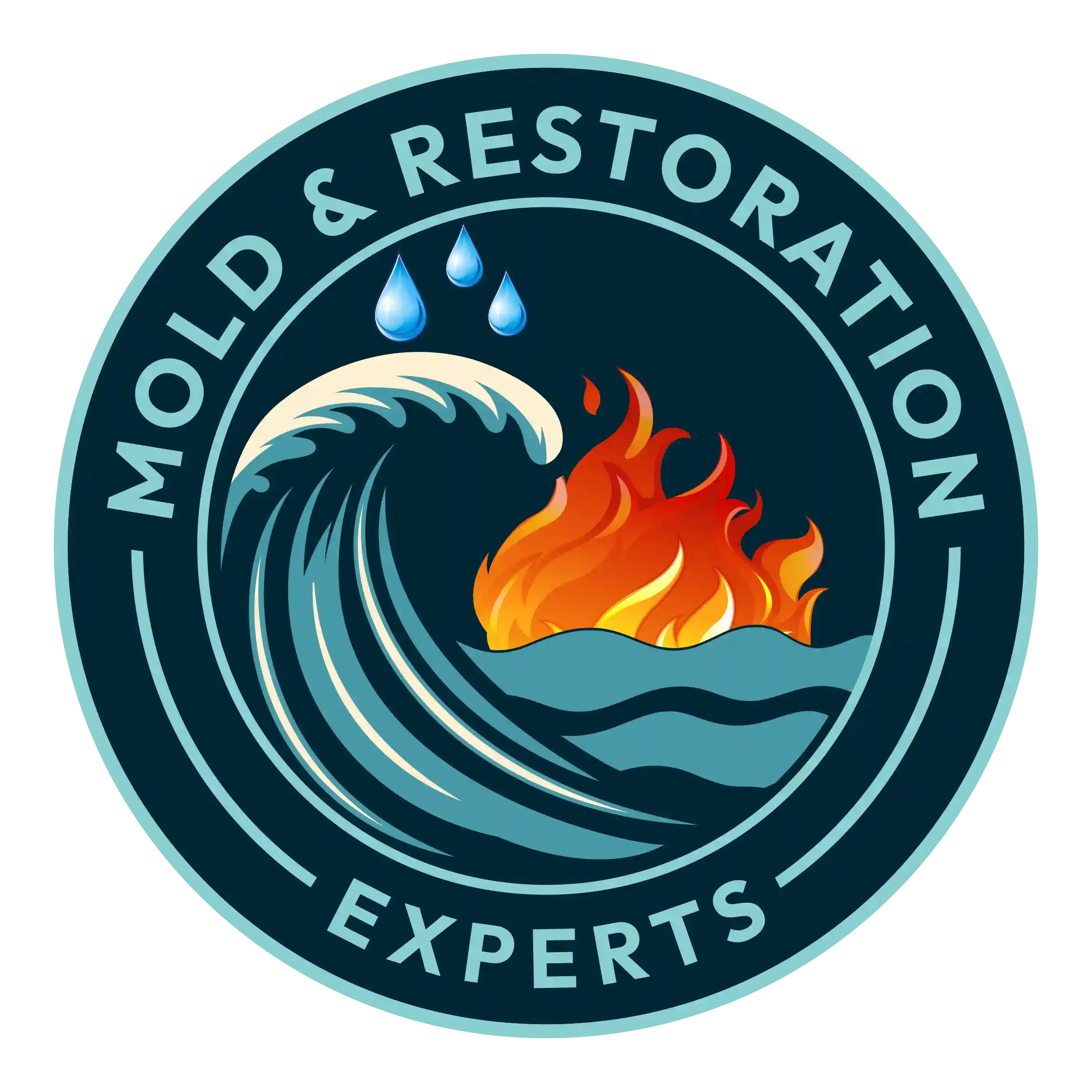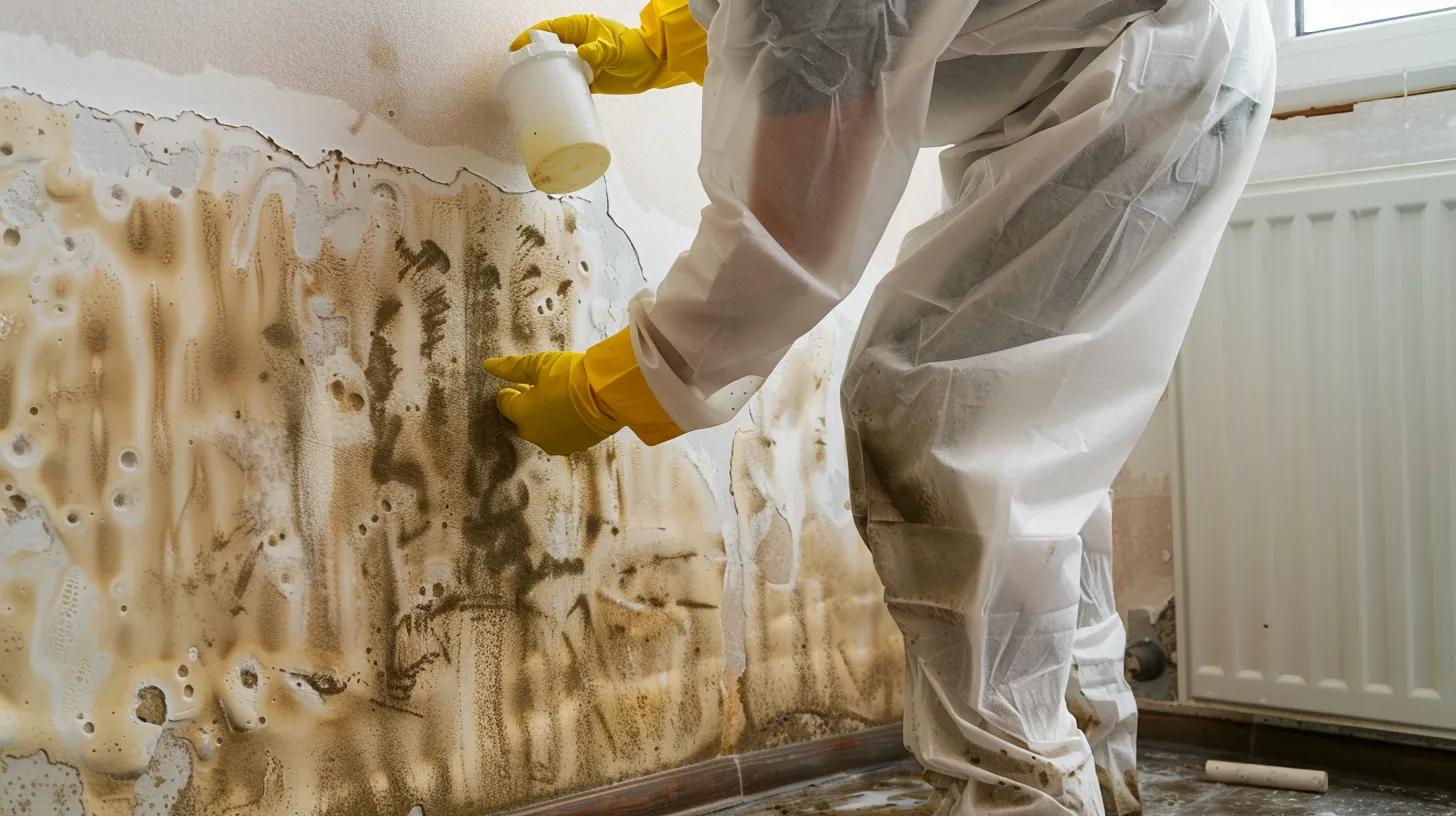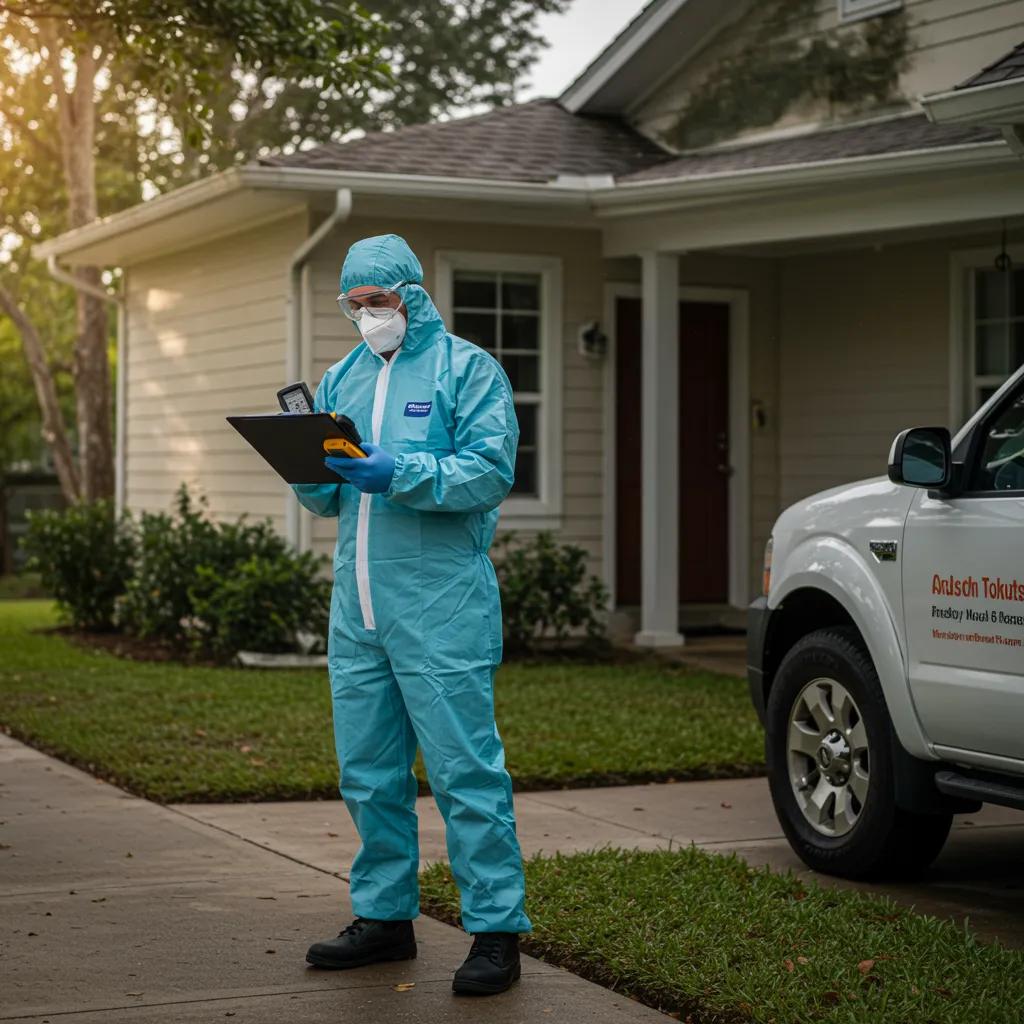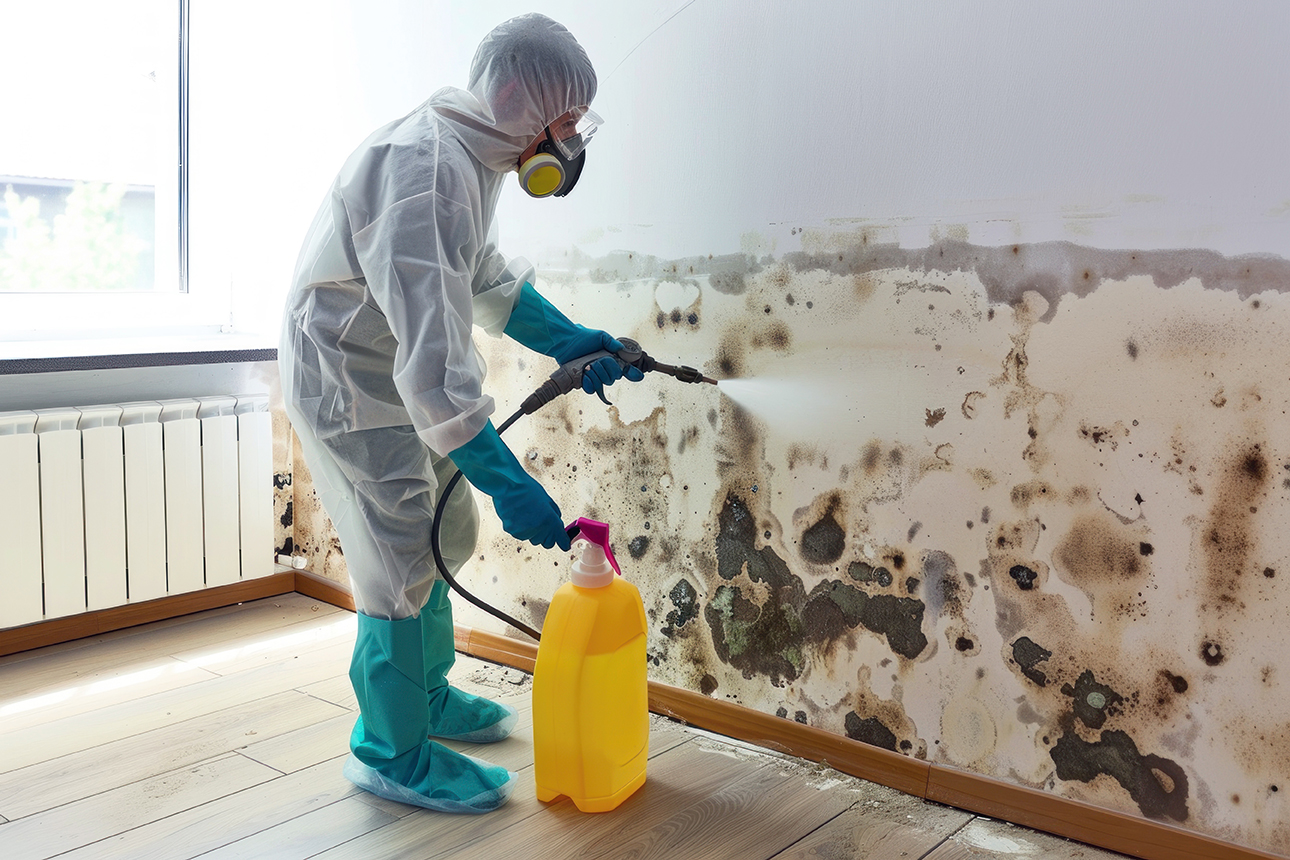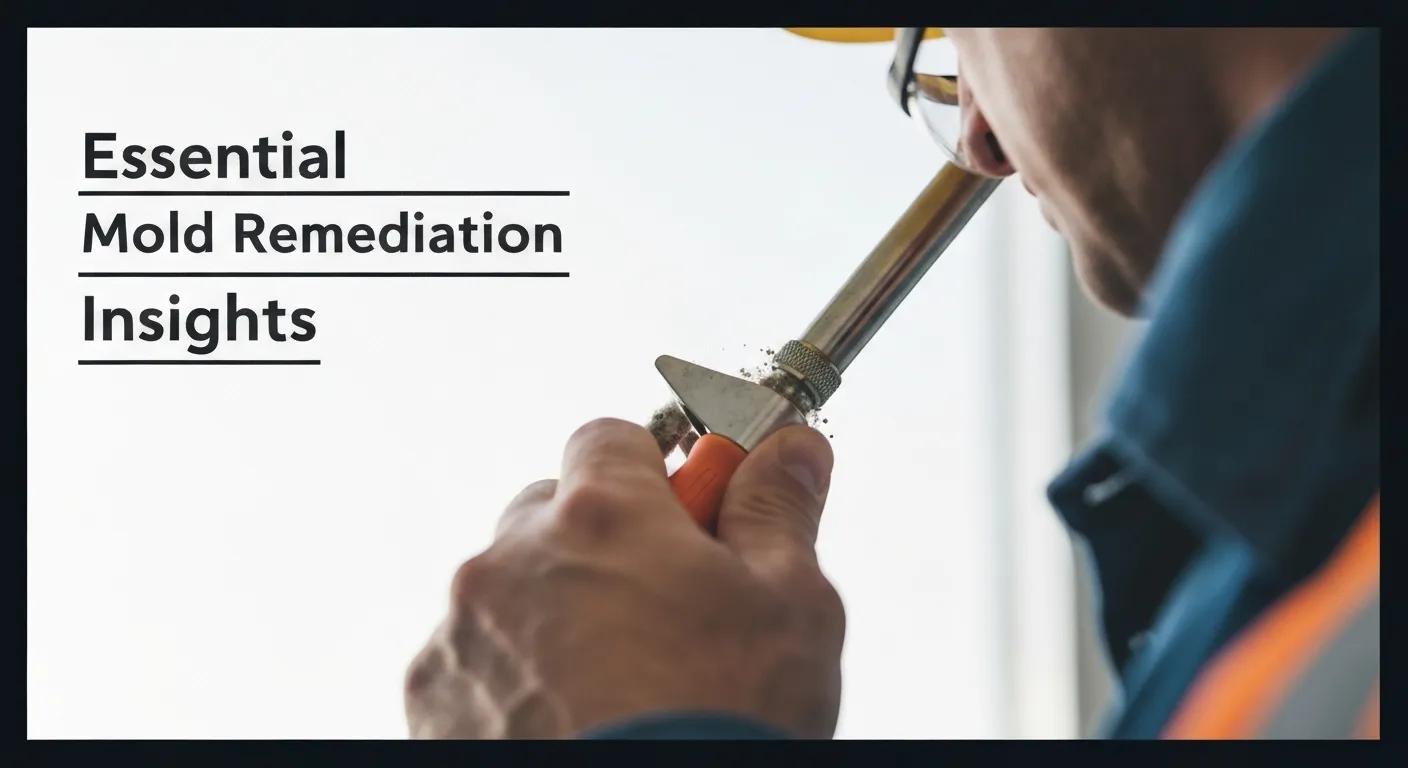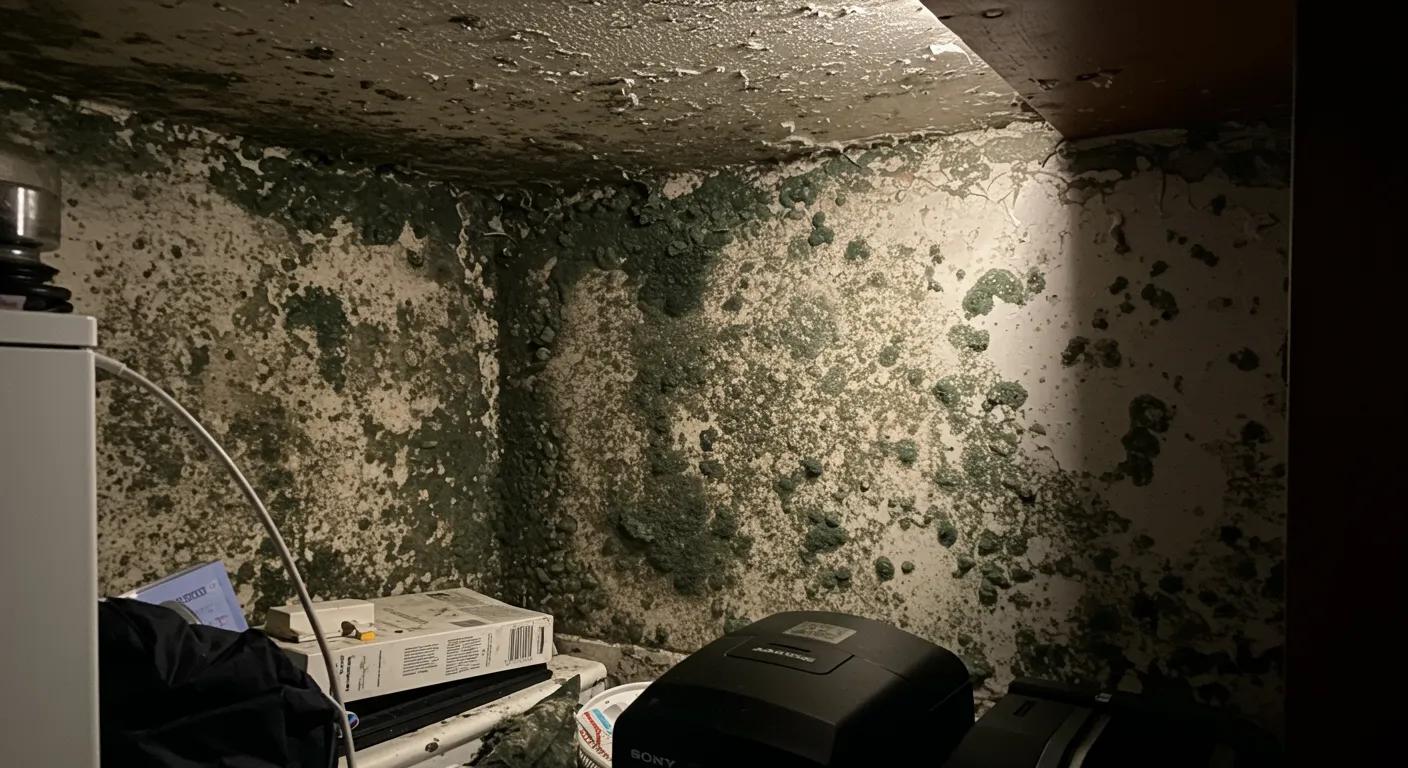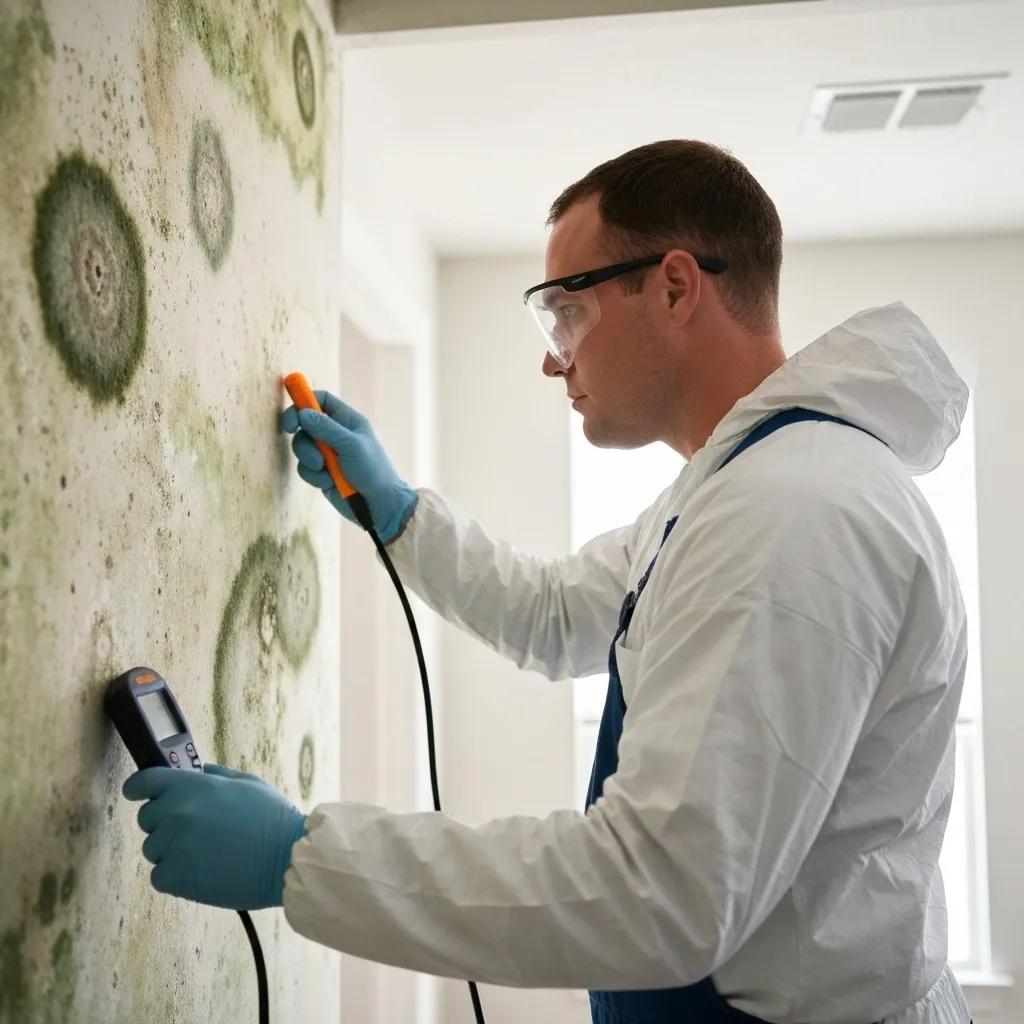Your Trusted Tampa Bay Mold Removal Specialists: Complete Mold Remediation and Inspection Services

Properties across Tampa Bay are constantly battling high humidity and storm-related water damage, which often hides mold infestations and compromises the air you breathe indoors. Our local mold removal experts understand how Florida’s climate accelerates the growth of mold on building materials, creating health risks and structural damage if not addressed. This guide will show you why homeowners and business owners rely on our highly trained technicians for fast, thorough mold inspections and remediation. You’ll learn about our inspection services and typical costs, follow our detailed remediation process, explore common mold types and their health effects, understand how water damage restoration prevents mold from returning, discover our emergency removal options, implement effective prevention strategies, navigate insurance claims, and find out how to schedule your free mold inspection today. By the end, you’ll have the clear, actionable advice you need to restore a healthy environment and protect your Tampa Bay property with expert mold removal you can depend on.
Why Partner with Tampa Bay’s Premier Mold Removal Experts?
Choosing local mold removal specialists means you’re working with professionals who deeply understand Tampa Bay’s specific moisture issues, local regulations, and common building practices. Our certified technicians utilize cutting-edge inspection tools, such as thermal imaging cameras and moisture meters, to detect hidden mold within 24–48 hours of water exposure. We employ expert containment procedures and HEPA-filtered negative air pressure to create a safe remediation zone, preventing cross-contamination. You can trust us because we provide clear estimates, detailed work scopes, and post-service quality checks. Working with a local provider ensures a faster response after heavy rains or flooding, minimizing the time it takes for mold to spread and damage your property or trigger allergies. This community-focused approach means we’re accountable and ensure every remediation project meets local health standards and building codes, giving Tampa Bay residents peace of mind and a mold-free home.
Our Mold Specialists Are Highly Certified and Expertly Trained
Our team is comprised of technicians rigorously trained in industry-standard mold assessment and remediation practices. Each specialist completes advanced training covering microbial sampling, EPA guidelines for safe mold cleanup, and proper disposal of contaminated materials. Continuous education in moisture control and building science keeps them up-to-date with the latest best practices. These qualifications ensure that every inspection and remediation step adheres to strict protocols, from the initial assessment to the final clearance testing.
Our Local Insight Benefits Tampa Bay Homeowners and Businesses
Our familiarity with regional building materials, such as pine framing, stucco exteriors, and raised foundations, allows our experts to anticipate moisture traps and common entry points for water. We customize containment and drying strategies to match local architectural styles and seasonal humidity levels, avoiding unnecessary demolition. Our relationships with local suppliers ensure quick access to specialized drying equipment and antimicrobial treatments, minimizing disruption to your home or business operations.
Our Clients Praise Our Mold Removal Services
Homeowners frequently praise our detailed inspection reports and consistent, responsive communication throughout the entire remediation process. Business owners emphasize our ability to work around their operating hours and swiftly restore safe, compliant work environments. Clients who have used our services before appreciate our follow-up inspections that confirm complete mold eradication, reinforcing their confidence in our transparent methods and dedication to client satisfaction.
What Mold Inspection Services and Costs Are Available in Tampa Bay?

A professional mold inspection precisely defines the scope of remediation by combining visual checks with scientific sampling and moisture analysis. Inspection costs in Tampa Bay typically range from $300 to $500, depending on the property’s size and how easily it can be accessed. Our standard services include moisture mapping to pinpoint hidden water leaks, air quality testing to measure spore counts, surface sampling to identify mold types, and infrared imaging to detect mold behind walls. These services create a detailed baseline for planning mold remediation and documenting for insurance, ensuring we provide targeted solutions that tackle both active mold and underlying moisture problems.
| Inspection Service | Starting Cost | Purpose |
|---|---|---|
| Visual Assessment | $300 | Identify visible mold and signs of moisture |
| Air Sampling | $350 | Measure mold spore levels in the air |
| Surface Sampling | $380 | Test collected samples for specific mold species |
| Moisture Mapping | $400 | Locate hidden leaks and damp areas |
These inspection components work together to uncover both obvious and hidden mold sources, guiding effective remediation and reducing the chance of future growth.
A Professional Mold Inspection Is Performed Through a Detailed Process
A licensed inspector begins with a thorough walkthrough, noting any discoloration, musty smells, or signs of water damage. Next, moisture mapping is used on walls and floors to find damp areas, followed by air and surface sampling to count and identify mold species. Detailed field notes and lab results are compiled into a report that outlines the areas of contamination and recommends the necessary remediation steps.
Several Factors Affect Mold Inspection Costs in Tampa Bay
Inspection pricing is based on the property’s square footage, the number of samples needed, and the difficulty of accessing areas like attics, crawl spaces, or HVAC systems. Emergency assessments requested within 24 hours of water damage may have higher fees due to expedited lab processing and immediate team deployment.
Air Quality Testing Helps Detect Hidden Mold
Air sampling collects microscopic mold spores circulating in your property’s air, revealing hidden infestations that aren’t visible. By comparing indoor spore counts to outdoor levels, our technicians can determine if remediation needs to extend beyond visible problem areas, ensuring complete mold control.
How Does Our Mold Remediation Process Work for Tampa Bay Properties?

Expert mold remediation involves proven containment techniques, targeted removal methods, and thorough sanitization to restore a healthy indoor environment. The process starts with a detailed assessment report that outlines the remediation area and the recommended treatment plan. Our technicians then set up contained work zones using negative air machines and plastic sheeting to prevent spores from spreading. Mold-contaminated materials are either cleaned with EPA-approved antimicrobial solutions or carefully removed and disposed of according to state regulations. We use high-efficiency HEPA vacuums and air scrubbers to capture any remaining spores, and apply surface treatments to neutralize residual mold activity. A final clearance inspection confirms that spore levels have returned to acceptable background levels, ensuring your property is mold-free.
Understanding the Step-by-Step Stages of Mold Remediation
- Assessment and Planning – Determine the extent of contamination and the containment strategy
- Containment Setup – Install barriers and negative air pressure systems
- Source Removal – Remove or treat materials affected by mold
- Surface Cleaning – Apply antimicrobial agents and perform HEPA vacuuming
- Drying and Dehumidification – Utilize industrial dehumidifiers to remove moisture
- Post-Remediation Inspection – Verify clearance through testing
Our Safe Methods for Containing and Removing Mold
Technicians isolate affected areas with sealed enclosures and maintain negative air pressure to capture spores before they can escape. We use personal protective equipment, including respirators, disposable suits, and gloves, to protect both occupants and our team. Removed materials are double-bagged, labeled as biohazard waste, and transported off-site for proper disposal.
Post-Remediation Testing Guarantees a Mold-Free Environment
Clearance testing uses the same methods as initial inspections, including air and surface sampling, to confirm that spore counts have decreased to normal background levels. A written certificate of clearance verifies compliance with industry standards and assures you that remediation goals have been met.
Common Mold Types in Tampa Bay and Their Health Effects
Tampa Bay’s warm, humid climate is ideal for various types of mold, from allergenic Cladosporium to toxic Stachybotrys. Black mold (Stachybotrys chartarum) commonly grows on materials rich in cellulose after prolonged moisture exposure, releasing mycotoxins that can cause breathing difficulties and neurological issues. Alternaria and Aspergillus are also frequently found, producing allergens that can worsen asthma and allergic rhinitis. Understanding these mold types and their health impacts helps us develop targeted removal strategies and effective prevention measures.
The potent mycotoxins produced by Stachybotrys chartarum, commonly known as black mold, can lead to significant health issues, including respiratory distress and neurological symptoms, especially when inhaled from damp building materials.
| Mold Type | Common Habitat | Potential Health Impact |
|---|---|---|
| Stachybotrys | Wet drywall, particleboard | Mycotoxin exposure, lung irritation |
| Aspergillus | HVAC systems, insulation | Allergic reactions, opportunistic infections |
| Cladosporium | Wood surfaces, fabrics | Asthma triggers, nasal congestion |
| Penicillium | Water-damaged carpets, textiles | Respiratory discomfort, sinus issues |
Black Mold: Understanding Its Dangers
Black mold, scientifically known as Stachybotrys chartarum, thrives on damp, cellulose-rich materials and releases powerful mycotoxins. Inhaling these toxins can result in chronic coughing, severe headaches, and a weakened immune system, making their prompt removal critical for the health of occupants.
The Health Risks of Mold Exposure
Exposure to mold spores and their byproducts can trigger allergic reactions, worsen asthma symptoms, cause skin irritation, and lead to chronic sinusitis. Individuals with weakened immune systems or existing respiratory conditions are at a higher risk for serious infections and widespread inflammation.
Florida’s Humidity Accelerates Mold Growth
When relative humidity consistently exceeds 60 percent, mold spores can begin to grow within 24–48 hours of encountering moisture. Tampa Bay’s subtropical climate intensifies this cycle, requiring ongoing moisture control efforts to prevent mold from returning.
How Can Water Damage Restoration Prevent Mold Growth in Tampa Bay Homes?
Water damage restoration stops mold growth by removing excess moisture, thoroughly drying building materials, and repairing the sources of water intrusion. Comprehensive restoration services include extracting floodwater, drying structures, and controlled dehumidification, eliminating the damp conditions that mold needs to thrive. Acting quickly after leaks or floods reduces moisture in framing, drywall, and carpets, shortening the window for mold spores to germinate. By combining restoration with mold remediation, we address both current mold problems and future risks through effective moisture management and structural repairs.
The aftermath of major weather events like Hurricane Katrina demonstrated how damp, warm conditions in water-damaged structures can rapidly accelerate fungal growth.
The Direct Link Between Water Damage and Mold Infestation
When water enters a property, it saturates porous building materials, providing the essential moisture for mold spores to start growing and spreading. Even minor leaks hidden behind walls can lead to unseen mold colonies that travel through HVAC systems and wall cavities.
Our Water Damage Restoration Services Prevent Mold Growth
We use industrial-grade extraction equipment and drying systems to bring wet areas back to safe moisture levels. Our structural drying monitors maintain precise humidity levels, and our team identifies and seals leak sources to prevent future problems. These actions remove the environmental conditions that mold requires to flourish.
Immediate Steps to Take After Water Damage
First, turn off the power to affected areas and remove any standing water using pumps or wet vacuums. Open windows for ventilation, move valuable items to a dry location, and contact professional restoration services within 24 hours to prevent mold growth and further structural damage.
What Emergency Mold Removal Services Are Available in Tampa Bay?
Emergency mold removal services offer rapid containment and remediation when significant mold infestations pose a threat to health and property. Available around the clock, these services dispatch response teams within hours to assess the damage, set up containment barriers, and begin removal procedures. Swift action limits the spread of mold, preserves indoor air quality, and helps businesses maintain operations. Our emergency protocols include immediate moisture reduction, HEPA-filtered negative air systems, and expedited cleaning schedules, ensuring critical environments like medical facilities and restaurants are restored safely and quickly.
Following natural disasters, rapid intervention is crucial, as significant mold growth can occur within 48 hours on damp building materials, posing health risks to those involved in recovery efforts.
When to Contact Us for Emergency Mold Removal
Call for emergency mold removal services immediately if you see extensive mold growth, notice persistent musty odors, or experience health symptoms like wheezing or skin irritation. Sudden flooding or major leaks also require prompt professional attention to prevent rapid mold spread.
Our Experts Provide Rapid Response to Mold Emergencies
Our local technicians can be dispatched within two hours of your call, arriving equipped with containment gear, moisture meters, and air scrubbers. Rapid deployment helps limit mold growth and reduces the extent of necessary demolition and reconstruction.
Our Emergency Mold Removal Is Safe and Effective
We adhere to strict safety protocols, including sealed work zones, negative air pressure, and personal protective equipment, to safeguard occupants and our team. EPA-registered antimicrobials neutralize active mold colonies, and HEPA vacuums capture airborne spores, ensuring a thorough and efficient emergency remediation.
How Can You Prevent Mold Growth in Your Tampa Bay Property?
Preventing mold proactively involves managing indoor humidity, maintaining clean HVAC systems, and promptly fixing any water leaks. Installing dehumidifiers in damp areas like basements and crawl spaces helps keep relative humidity below 60 percent. Regular HVAC maintenance and duct cleaning remove trapped dust and mold-fueling debris. Prompt repairs to your roof, plumbing, and windows eliminate potential entry points for moisture. Combined with proper ventilation in bathrooms and kitchens, these measures create an environment that discourages mold growth and ensures long-lasting indoor air quality.
Top Mold Prevention Tips for Tampa Bay Homes
Keep indoor humidity between 30–50 percent; use exhaust fans when cooking and showering; install drainage systems around your foundation; and clean gutters to direct water away from your building.
Moisture Control Minimizes Mold Risks
By keeping surfaces and air consistently dry, moisture control prevents spores from getting the hydration they need to germinate. Dehumidifiers and proper ventilation systems continuously remove excess humidity, preventing condensation on walls and ceilings.
The Importance of Regular HVAC Mold Cleaning
Ductwork and air handlers can accumulate dust and microbial matter, circulating spores throughout your living spaces. Routine cleaning and filter changes remove these contaminants, improving air quality and reducing the chances of hidden mold growth.
How Do Insurance Claims Work for Mold Damage in Tampa Bay?
Handling mold damage claims requires understanding your policy’s coverage limits, documenting all losses, and providing clear evidence of the need for remediation. Many homeowners’ insurance policies in Florida cover mold removal if it stems from a covered water damage event, though specific exclusions and limits may apply. Presenting detailed inspection reports, moisture readings, and photographic evidence strengthens your claim. Our professional mold and restoration experts can prepare scope-of-work documents, coordinate with adjusters, and ensure remediation meets industry standards, making the claims process smoother and helping you get the most out of your coverage.
Mold Removal Coverage by Homeowners Insurance in Florida
Yes, mold remediation is often covered when the mold growth is directly caused by a covered event, such as a sudden pipe burst or storm damage. Policies typically do not cover gradual leaks or issues from poor maintenance, so reporting damage quickly and having professional documentation is crucial.
Required Documentation for Mold Damage Claims
Your claim file should include a licensed inspection report, moisture meter logs, photos of the affected areas, and a detailed estimate for the remediation work. This documentation proves the extent of the damage and supports the recommended scope of services.
How Mold and Restoration Experts Assist with Insurance Processes
Our team prepares comprehensive remediation plans, submits necessary documentation to insurance adjusters, and communicates directly with insurance representatives to explain technical details. This support helps expedite claim approvals and ensures that covered services are fully reimbursed.
How Can You Contact Local Mold Removal Experts for a Free Inspection Today?
Requesting a free mold inspection provides an accurate assessment of potential mold issues without any upfront cost. Our technicians will conduct a targeted walkthrough, identify sources of moisture intrusion, and recommend customized remediation solutions. This no-obligation service gives you clear cost estimates and a remediation plan, empowering you to make informed decisions about restoring a safe and healthy environment in your property.
What Our Free Mold Inspection Offer Includes
Our complimentary inspection includes a visual assessment, moisture scanning of key areas, and a summary report detailing any identified issues and initial recommendations. You’ll receive a clear overview of potential remediation needs and estimated costs.
Scheduling a Mold Inspection in Tampa Bay
Simply call our office or fill out our online request form to schedule an appointment at your convenience. Our local scheduling team will work with your availability to send a certified assessor for prompt service.
What to Expect During Your First Consultation
During your initial visit, the assessor will discuss your concerns, inspect high-risk areas like attics, basements, and HVAC vents, and explain any detected moisture patterns. You’ll receive an overview of the next steps, cost estimates, and a projected timeline for any recommended remediation work.
Mold and Restoration Experts provides comprehensive, climate-specific solutions to protect your Tampa Bay property from mold threats. Our certified technicians combine advanced technology, transparent processes, and rapid response to restore healthy environments. By integrating prevention strategies and working closely with your insurance provider, we ensure long-term mold control and your peace of mind. Contact us today for a free inspection and take the first step toward a safer, cleaner indoor atmosphere.
